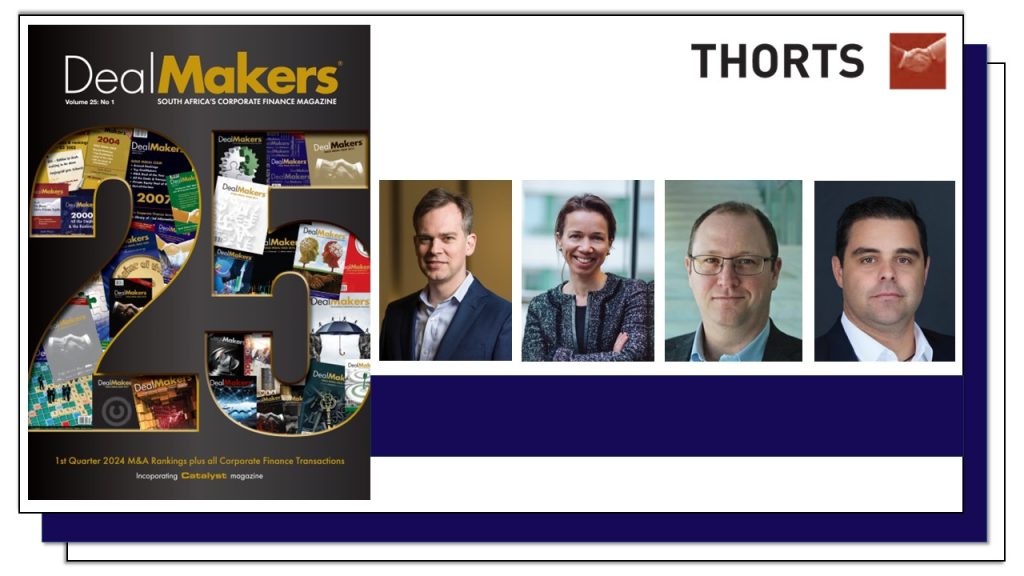In post-merger integration (PMI), technology issues have become as critical as the financial and people considerations that are traditionally emphasised.
Technology and data platforms are increasingly vital in facilitating the multi-year integration process, accelerating business synergies, and realising the transaction’s broader ambitions.
Companies that fail to adequately address technology and data in PMI jeopardise near-term business continuity and impede efforts to achieve the merger’s longer-term objectives, including promoting competitiveness through efficiency and innovation.
The solution is for companies to adopt a technology-centric PMI approach. This begins with establishing joint leadership of integration initiatives across business and technology functions, and aligning their strategic priorities. They should be supported by robust governance, the right operating model, and a data-driven culture to guide decision-making.
Tech’s critical role throughout the integration process
Technology and data play essential roles throughout the three horizons of the integration process.
Horizon 1 (Up to Day 100). In the initial phase, the merged company should prioritise business continuity. From the first day of combined operations, business activities should proceed as usual, with technology performing at or above pre-merger levels. Employees of both organisations should start to have a cohesive experience as one company.
Technology plays a crucial role in enabling this collaboration by establishing integrated operations, such as cross-company connectivity, communication and access tools that allow people to work together.
Unified cybersecurity measures are also essential. Our research shows that a significant increase in cyber and phishing attacks occurs immediately following a merger.
In certain mergers, particularly those involving highly digitised businesses, companies should consider opportunities to adopt temporary technological solutions that will help teams to rapidly realise high-value business objectives (e.g. a common, centralised data scheme to merge data quickly).
Understanding and governing data dispersed across both organisations is fundamental to establish a reliable source of truth that enables critical reporting and promotes business intelligence for the new entity. The merged company should make these capabilities a priority, as they will help to unlock early synergies.
Horizon 2 (Day 100 through Years 2–3). In this phase, the focus moves to integrating business processes and operations. For technology functions, this involves merging platforms and organisations to enable standardised processes, operating efficiently with the combined talent pool, and promoting technology synergies. Concurrently, tech teams must engineer future business products that support the merged company’s strategy, and lay the groundwork for business synergies now and during Horizon 3. For data functions, the goal is to harmonise data schemas and connect them to integrated reporting, analytics, and advanced data-driven use cases (such as AI, automation and digital applications).
Horizon 3 (Years 2–3 through Years 4–5). The focus here expands to the broader business ambition, aiming to achieve the merger’s strategic benefits on a larger scale. Technology and data teams should work in partnership with business teams to transform processes and enhance capabilities, strategically channelling investments into:
• Transforming Business Processes. Utilise data and AI to drive decision-making and automate operations.
• Revamping Operating Models. Transform the technology and business operating model to boost organisational productivity, establishing a fully-integrated delivery model in which business teams are supported by top-tier technical capabilities.
• Enabling Growth. Provide technology that supports both organic and inorganic growth. Examples include data platforms that allow seamless integration with external partners (such as for controlled data sharing) or scalable tools that enable the rapid incubation of new technologies.
Tech’s enablement of broader enterprise synergies
Our analysis found that, in most mergers, technology and data directly drive approximately 10% of synergies, while supporting the realisation of up to 85% of business synergies across various cost categories.
In typical integrations, the technology function must fulfil its own synergy targets. These usually include optimisation in tech procurement (for example, licences, cloud, and support services); rationalising demand by combining tech environments, providers, and delivery portfolios; and consolidating organisational structures and talent.
Technology’s role in facilitating broader enterprise synergies is even more critical. It drives synergies by enabling business units to boost revenue; for example, through transformed processes and better decision-making powered by data and AI. It also aids in reducing costs through automation and product-centred ways of working. At the same time, it provides integrated, accessible data – a single source of truth – that all business users can access to improve decision-making.
How to move tech to the centre of PMI
To move technology to the centre of integration planning and management, companies should take several actions.
• Joint Business-Tech Leadership. Establish collaboration between business and technology leaders to jointly develop the integration agenda and inform decisions from the outset, throughout the three horizons.
• Prioritisation. Define clear decision-making principles and prioritisation guidelines, adopting an iterative approach in mapping success criteria during each part of the integration. The focus should be on pragmatic achievements during each horizon, rather than aiming for perfection.
• Governance. Bring technology and data under formal governance and steering mechanisms by establishing a dedicated team in the integration management office.
• Operating Model. Create an integrated operating model with multi-disciplinary product teams, jointly staffed by highly-skilled business and technology personnel. This model should promote clear accountability within teams, with business personnel defining the direction and tech personnel responsible for determining how to achieve the goals.
• Data-Driven Culture. Foster data-driven decision-making by encouraging and celebrating fact-based choices across the three horizons.
These actions can enable companies to avoid complexities and delays that would hinder business integration and the realisation of synergies. They are neither complex nor expensive, but require early implementation to prevent costly repercussions in the future. Ultimately, adopting the right technology strategy at the outset of an integration is critical to ensure that the merger’s goals are fully achieved.
Jonathan Milde, Jacqueline Govers and Chris Barrett (Global Leader of Post-Merger Integration) are Managing Directors and Partners and Claudio Di Vittorio is a Partner | Boston Consulting Group.

This article first appeared in DealMakers, SA’s quarterly M&A publication.
DealMakers is SA’s M&A publication.
www.dealmakerssouthafrica.com



